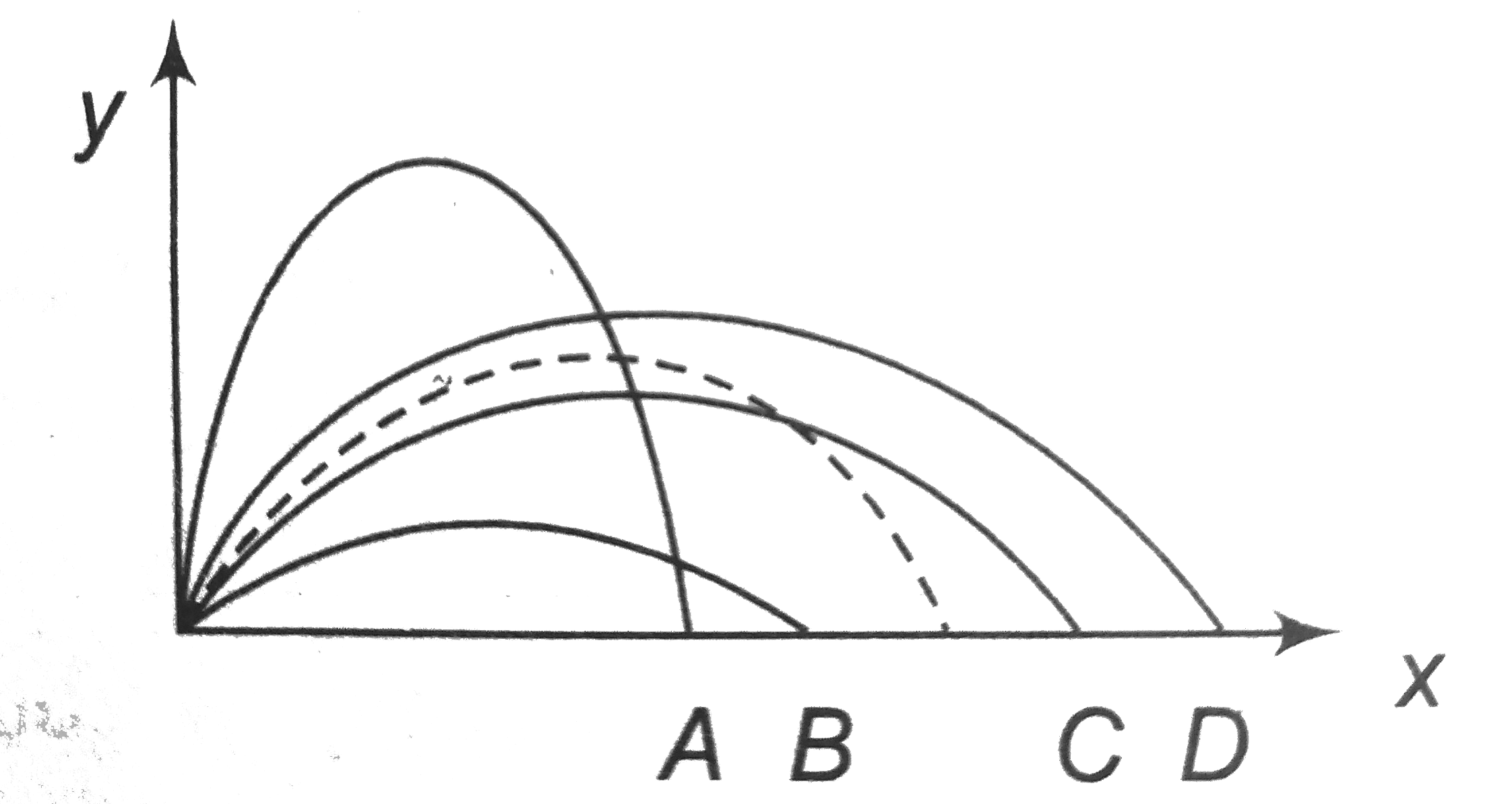The path followed by a projectile is called its
trajectory
range
amplitude
none of these
The correct Answer is:A
To solve the question "The path followed by a projectile is called its", we need to analyze the options provided and understand the concept of projectile motion.
1. Understanding Projectile Motion:
- A projectile is any object that is thrown into the air with an initial velocity and is subject to the force of gravity. The motion of a projectile is influenced by two components: horizontal motion and vertical motion.
2. Identifying the Path:
- The path that a projectile follows is not a straight line but a curved path due to the influence of gravity. This curved path is a result of the combination of horizontal and vertical motions.
3. Defining Trajectory:
- The specific term used to describe the path followed by a projectile is called its "trajectory." This trajectory can be visualized as a parabola when plotted on a graph.
4. Evaluating the Options:
- Option 1: Trajectory - This is the correct answer as it defines the path of the projectile.
- Option 2: Range - This refers to the horizontal distance covered by the projectile, not the path.
- Option 3: Amplitude - This term is generally used in wave motion and does not apply here.
- Option 4: None of these - This is incorrect since we have identified the correct term.
5. Conclusion:
- Based on the definitions and understanding of the terms, the path followed by a projectile is called its trajectory.
Final Answer:
The path followed by a projectile is called its trajectory.
---
- A projectile is any object that is thrown into the air with an initial velocity and is subject to the force of gravity. The motion of a projectile is influenced by two components: horizontal motion and vertical motion.
- The path that a projectile follows is not a straight line but a curved path due to the influence of gravity. This curved path is a result of the combination of horizontal and vertical motions.
- The specific term used to describe the path followed by a projectile is called its "trajectory." This trajectory can be visualized as a parabola when plotted on a graph.
- Option 1: Trajectory - This is the correct answer as it defines the path of the projectile.
- Option 2: Range - This refers to the horizontal distance covered by the projectile, not the path.
- Option 3: Amplitude - This term is generally used in wave motion and does not apply here.
- Option 4: None of these - This is incorrect since we have identified the correct term.
- Based on the definitions and understanding of the terms, the path followed by a projectile is called its trajectory.
The path followed by a projectile is called its trajectory.
Topper's Solved these Questions
- BOOK - MCGROW HILL PUBLICATIONCHAPTER - GRAVITATION EXERCISE - HIGHER ORDER THINKING QUESTIONS25videos
GRAVITATION
- BOOK - MCGROW HILL PUBLICATIONCHAPTER - ELECTRIC CURRENT EXERCISE - HIGHER ORDER THINKING QUESTIONS29videos
ELECTRIC CURRENT
- BOOK - MCGROW HILL PUBLICATIONCHAPTER - HEATEXERCISE - HIGHER ORDER THINKING QUESTIONS15videos
HEAT
Similar Questions
Knowledge Check
- Question 1 - Select One
Path followed by the projectile is
AStraight line,BEllipseCCircularDParabolic - Question 2 - Select One
The horizontal distance travelled by a projectile is called its
AtrajectoryBrangeCamplitudeDnone of these - Question 3 - Select One
The pathe of a projectile is
ACircularBparabolicCLinearDHyperbolic
Prove that:
The path of a projectile is a straight line.View SolutionFor ordinary heights, the path of a projectile is parabolic but for great heights the path is elliptical. Explain.
View SolutionThe path of projectile in vacuum is a
View SolutionThe path of a projectile in the absence of air drag is shown in the figure by dotted line. If the air resistance is not ignored then which one of the paths shown in the figure is appropriate for the projectile?
 View Solution
View SolutionThe path of one projectile as seen from another projectile is a (if horizontal components of velocities are equal)
View Solution

